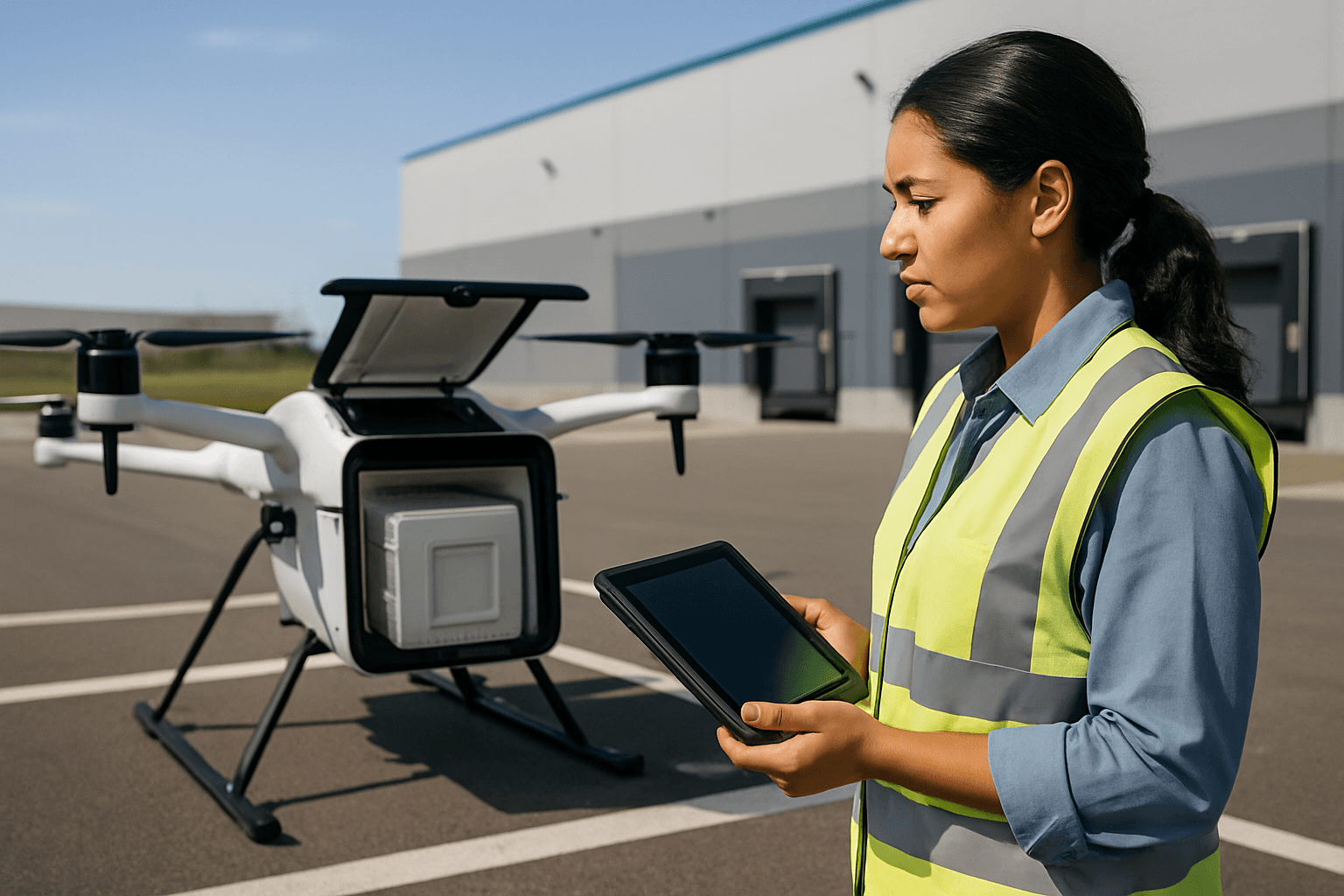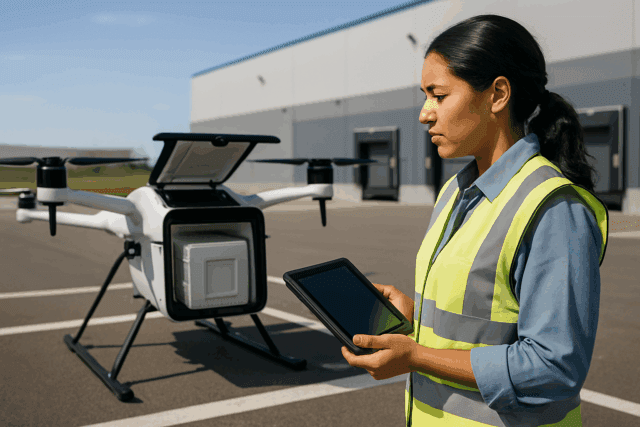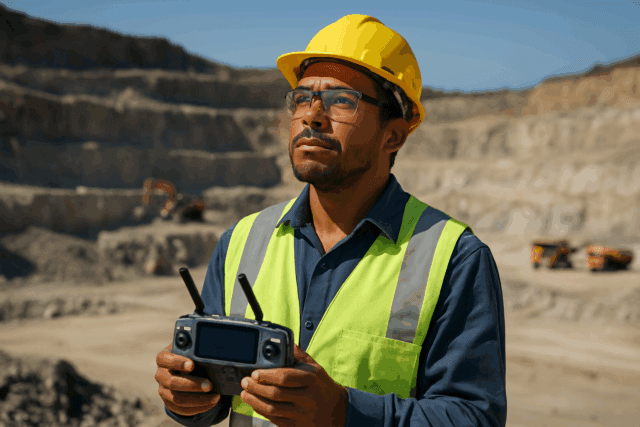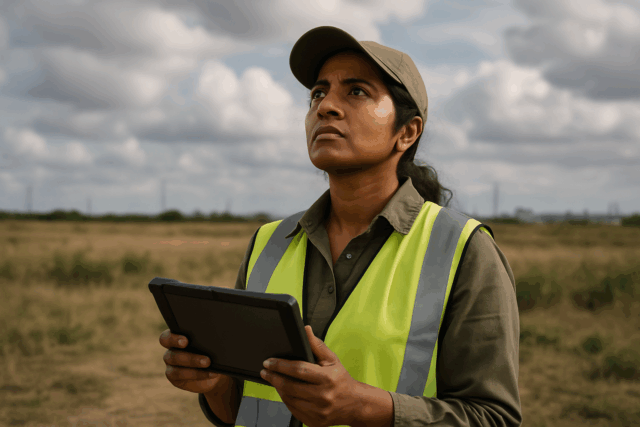Imagine a world where life-saving vaccines reach remote clinics in hours, or fresh produce arrives at your doorstep still perfectly chilled, all delivered silently from the sky. This vision of drone delivery for temperature-sensitive goods is rapidly moving from concept to reality, promising to revolutionize cold chain logistics. Maintaining a precise temperature range for perishable items like pharmaceuticals, blood products, and certain foods is a critical challenge in traditional logistics, and drones are emerging as a dynamic solution to this complex problem.
The Critical Need for Refrigerated Drone Delivery
The demand for efficient cold chain logistics is immense, particularly for products that degrade rapidly outside specific temperature parameters. Breaches in the cold chain can lead to significant financial losses, compromised product quality, and, in the case of medical supplies, serious health risks.
Life-Saving Medical Supplies
One of the most compelling applications for refrigerated drone delivery is in the medical sector. Vaccines, blood plasma, vital organs, pathology samples, and critical medications often require strict temperature control, sometimes as low as -78°C. Drones can bypass congested ground infrastructure and difficult terrains, delivering directly to hospitals, remote clinics, or disaster-stricken areas much faster than conventional methods. For instance, Zipline has been instrumental in delivering blood and medical supplies in countries like Rwanda and Ghana, operating numerous flights daily from distribution hubs. Research at Johns Hopkins’ Bayview Medical Center has demonstrated successful drone delivery tests for blood products using refrigerated coolers, showing no biological change after flights lasting 30 minutes over 8-12 miles.
Perishable Food Items
Beyond healthcare, the food industry stands to gain significantly. Consumers increasingly expect rapid delivery of fresh groceries, hot meals, and even frozen items like ice cream, which requires meticulous temperature management from fulfillment center to doorstep. Drones offer the potential for ultra-fast delivery, ensuring food items arrive in optimal condition, improving customer satisfaction and reducing spoilage. Companies like Wing and Flytrex are already piloting grocery and restaurant food deliveries, including temperature-sensitive items.
How Drones Maintain the Chill: Technology at Play
Delivering refrigerated goods via drone requires specialized technology to overcome the inherent challenges of aerial transport, where internal components generate heat and external conditions fluctuate.
Advanced Thermal Management Systems
To combat temperature variations, drones for cold chain logistics are being engineered with sophisticated thermal management systems integrated into their cargo bays. These often combine:
- Passive Cooling Solutions: Rely on advanced insulation materials, phase change materials (PCMs), and specialized container designs to maintain a stable internal temperature for a specified duration.
- Active Cooling Systems: Include cooling fans and electric heating elements within the cargo bay that can be monitored and controlled in real-time, even remotely via cloud servers. This allows for dynamic temperature adjustments based on the specific payload and environmental conditions.
Specialized Packaging Solutions
Innovative packaging is crucial. Companies like Intelsius have developed multi-use, temperature-controlled packaging systems, such as the ORCA Drone, specifically designed for medical drone deliveries. These systems utilize advanced insulation and thermal media technologies, providing high performance for at least 48 hours of temperature control across various ranges (e.g., -78°C, +2°C to +8°C) while being compact and reducing volumetric weight. These packages often include onboard loggers for real-time visibility of internal and external temperatures, location, orientation, and battery status, ensuring end-to-end cold chain compliance.
Benefits of Refrigerated Drone Delivery
The adoption of drones for cold chain logistics offers several compelling advantages:
- Speed and Efficiency: Drones can travel at high speeds (some up to 70 mph) and take direct routes, avoiding traffic congestion, which is crucial for time- and temperature-sensitive goods. This can drastically reduce delivery times, improving product quality and customer experience.
- Enhanced Accessibility: Drones can reach remote or hard-to-access areas that are challenging for traditional ground transport due to geography, lack of infrastructure, or disaster conditions. This is particularly vital for delivering medical supplies in underserved regions.
- Reduced Human Exposure: During public health crises or in hazardous environments, contactless drone delivery minimizes human interaction, enhancing safety.
- Operational Efficiency and Cost Reduction: While initial investment exists, drones can potentially lower operating costs by reducing reliance on traditional vehicle fleets, fuel, and labor in the long run. Some analyses suggest operating costs for drone delivery can be 40% to 70% lower than vehicle delivery.
- Environmental Benefits: Electric-powered drones produce zero emissions, offering a more eco-friendly alternative to conventional delivery methods and contributing to sustainable development.
Navigating the Challenges
Despite the immense potential, several hurdles must be addressed before refrigerated drone delivery becomes widespread.
Payload and Battery Limitations
Most current delivery drones have limited payload capacities, typically carrying around 2 to 5 kilograms, and flight times of 30 to 60 minutes. The additional weight of insulation, cooling systems, and temperature-sensitive products further reduces the available payload and range. Cold temperatures can also significantly decrease battery life and operational time, while hot temperatures risk overheating internal components.
Range and Infrastructure
While some drones boast ranges of several miles, larger-scale, long-range refrigerated deliveries are still in development. Establishing networks of drone hubs and charging stations will be critical to support wider adoption.
Weather Dependency
Drones are sensitive to adverse weather conditions. Strong winds can destabilize drones and increase energy consumption, while rain, snow, or fog can damage electronics, impair visibility, and ground operations entirely. Extreme temperatures, both hot and cold, also directly impact drone performance and battery longevity.
Regulatory Landscape and Public Perception
Regulations regarding drone flight, especially beyond visual line of sight (BVLOS), vary by region and are still evolving. Public acceptance, privacy concerns (due to onboard cameras), and safety perceptions also play a significant role in the expansion of drone delivery services.
Pioneering the Sky: Companies and Trials
Numerous companies are at the forefront of developing and implementing drone delivery services, including for refrigerated goods:
- Zipline: A global leader in autonomous delivery, Zipline specializes in medical supplies like vaccines and blood, operating extensively in Africa and expanding into the U.S. and Japan. They utilize cold chain technology like insulated transport solutions.
- Wing (Alphabet): A pioneer in commercial drone delivery, Wing delivers items including ice cream, coffee, and pharmaceuticals in select U.S. and international locations, and has introduced larger drones for heavier deliveries.
- Flytrex: Focuses on fast, on-demand food and retail deliveries in suburban areas of the U.S., partnering with local businesses and major retailers like Walmart.
- Matternet: Specializes in delivering medical supplies, vaccines, and lab samples in urban and remote areas across the U.S. and Europe.
- DroneUp: Partners with healthcare organizations and retailers, including Walmart, and is developing temperature-regulated storage lockers for drone pick-up and drop-off.
- Customized Drones (C-Drones): Provides custom-made delivery drone solutions with patent-pending cooling/heating technologies for medical supplies and food.
Walmart, for example, has completed over 20,000 deliveries as part of its drone pilot projects, including groceries and fragile items like eggs, with some deliveries as fast as 30 minutes.
The Future Outlook for Cold Chain Drone Logistics
The concept of cold storage drone operation is both promising and enlightening. While significant challenges remain, particularly in scaling operations, improving payload capacity, extending battery life, and navigating regulatory complexities, the industry is making rapid advancements. The global drone logistics and transportation market is projected to reach $29.06 billion by 2027, indicating a strong demand for this technology.
As technology continues to evolve, with innovations in battery efficiency, thermal management, and autonomous flight, refrigerated drone delivery is poised to become a practical and increasingly common option for a wide array of temperature-sensitive goods.





